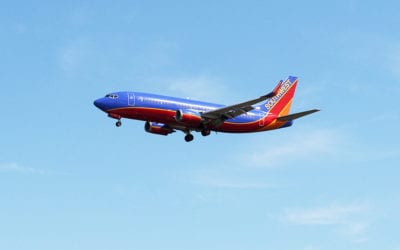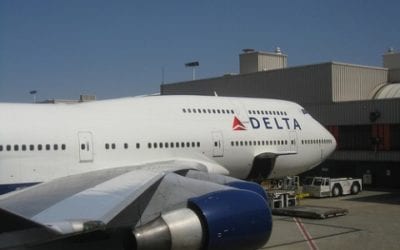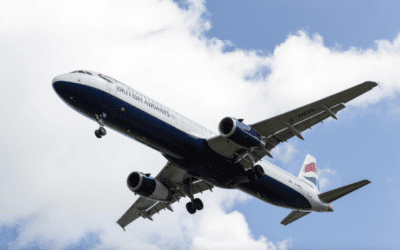A few weeks ago, I wrote about the discussions and tests which were then ongoing in the UK, which many hoped would lead to the complete elimination of the liquid restrictions in airline carry-on luggage there.
That day may come sooner than you think.
Kip Hawley, the Transportation Security Administration head, wrote in his blog Friday that by next fall, size restrictions on liquids and gels would be removed. On Tuesday, Jens Mester, a EU Commission spokesman, said he is confident carry-on liquid restrictions will be lifted as early as 2010 in the EU.
There are a number of technologies in play for a carry-on liquids scanning program, which could enable TSA to eliminate the liquid restrictions now in place.
Standard X-ray is already deployed in every commercial airport and is scanning all carry-on luggage, laptops, liquids, and other belongings. While TSA agents can use it to detect the presence of liquids, it can’t determine if the liquids are a threat.
Right now, the one technology currently deployed by TSA which can detect explosives is ETD Trace Detection. All carry-on inspection lanes at US commercial airports have this technology available. The drawback of it is that its use is time consuming, as TSA agents must take a sample by rubbing cloth in open bags and then testing the cloth. TSA also has several hundred handheld ETD’s that are capable of detecting explosive particles and vapor.
TSA currently has bottle scanners in some airports to spot test “exception liquids” such as prescription medications. They even have portable advanced spectrometers at major airports, which can determine whether any chemical or substance is a threat. TSA is using more than 500 K-9 teams to detect explosives in passenger areas around airports, and have several hundred more in airport cargo areas. There are other technologies in use, such as CT scanners, but very few CT units are installed because of their expense and physical size.
Advanced Technology (AT) X-ray can examine the dimensions and density of objects within a carry-on bag. This is the equipment for liquid scanning which both the UK and US have had positive test results in the last several months. Implementing a scanning program of liquids in carry-on luggage, while not particularly expensive for the UK with 30 commercial airports, will be very expensive in the US, with its 450 commercial airports. Now that we know the technology works, the question becomes, will enough funds be allocated to equip all US commercial airports with it?
TSA reports that by the end of the year, 500 to 600 of the 2,000 carry-on inspection lanes in US commercial airports will have this technology deployed. By the end of next year, at least 1,200 lanes will have AT X-ray units deployed. Mr. Hawley states that the new software expected to be available by the middle of next year for AT X-ray units, will enable this technology to be able to detect whether or not liquids in carry-on luggage pose a danger.
From Kip Hawley’s blog statement, it now appears that TSA is ready, willing, and able to deploy the technology necessary to eliminate the carry-on liquid restrictions, despite the expense. Mr. Hawley wrote:
Here’s the plan:
Now: We are pretty close to having a network of AT-X-Ray deployed so that nearly 70% of daily passengers will be using major airports with AT. TSA is getting the hardware installed so that when the software is ready in the next year or so, all we have to do is a software upgrade. We will be testing software versions in the coming months.
Fall-2009: Size restriction removed, but all liquids will have to be placed in a separate bin. AT X-Ray software will be advanced enough to tell the difference between threat and non-threat but not yet proven to tell the difference when it is hidden in a bag.
End of 2010: No restrictions. AT X-Ray will have upgraded software that is proven to detect threat liquids in any configuration and is deployed in enough places so that TSA can change the rules to meet one uniform standard for the country.
I have been an outspoken critic of the liquid restrictions since they were put in place, as I don’t believe they are effective in preventing determined terrorists from bringing explosives aboard commercial aircraft.
I applaud Hawley and TSA on this effort to eliminate carry-on liquid restrictions, and install the AT X-ray units nationwide. The AT X-ray equipment will dramatically improve US carry-on inspection, by permitting more accurate and more comprehensive non-invasive scrutiny of carry-on luggage, and permit these superior inspections to be carried out more quickly than currently possible.
I hope Hawley and TSA will now move to better train its agents to perform “behavior detection,” because of its effectiveness. “Behavior detection” can really make commercial flights much safer. I agree with Bruce Schneier, an internationally renowned security technologist, that we only need to look at El Al to see how it’s done, and that I don’t see the TSA doing it properly at this time.
After many years working in corporate America as a chemical engineer, executive and eventually CFO of a multinational manufacturer, Ned founded a tech consulting company and later restarted NSL Photography, his photography business. Before entering the corporate world, Ned worked as a Public Health Engineer for the Philadelphia Department of Public Health. As a well known corporate, travel and wildlife photographer, Ned travels the world writing about travel and photography, as well as running photography workshops, seminars and photowalks. Visit Ned’s Photography Blog and Galleries.



